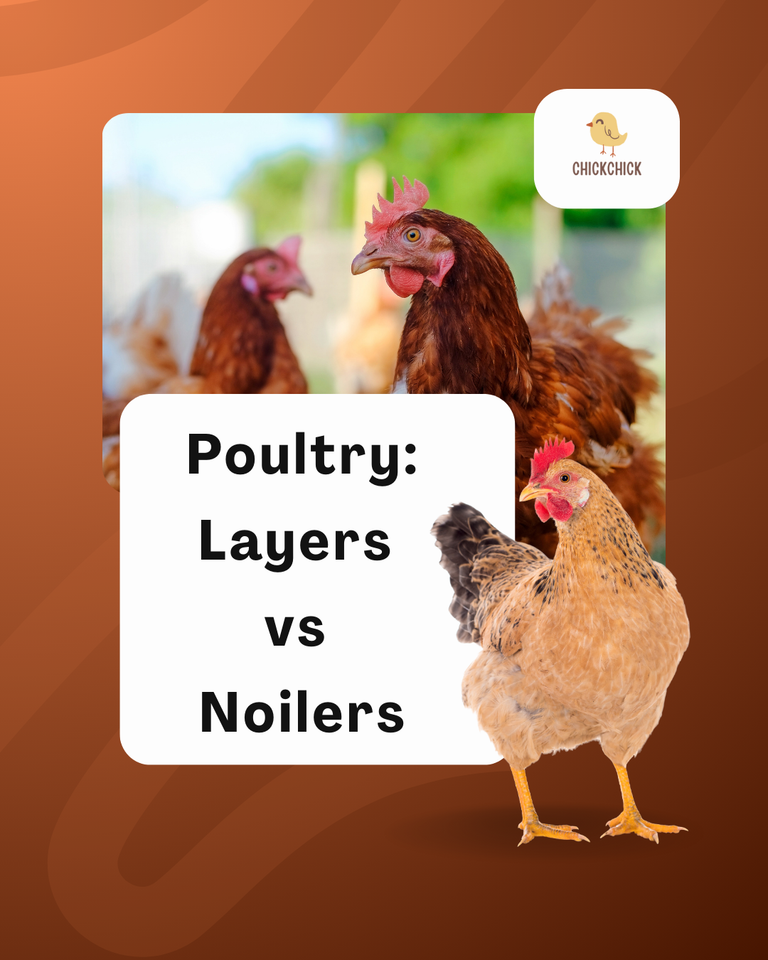Chickchick Egg Farming: Layers vs. Noilers

Last week, I gave a quick run down on what the expectations are for the business. We are yet to kick off but I am still on the matter of enquiries. I have another appointment, this time with an established business woman in the poultry business. From what I gathered about the woman, she’s been in the business for over five years and is well versed on various ways to run it.
I was told she would know cost effective ways to run a poultry of the size I’m going for and she will give more insight in things I want to know. So, on Friday I will go see her. I’ll be going with the lady that told me about her and then, I just hope for more clarity.
I saw some chickens that sparked my interests. I saw them on the street and they looked really weird. They were abnormally large and could barely run. They were full of meat. I asked around wanting to know who owns them and found out they were a different species - hybrid. They are called Noilers.
From my research, Noilers are a breed originated in Nigeria as a result of a cross between the Nigerian indigenous chicken and the White Plymouth Rock Chicken. There is a careful selection process that goes into the breeding which has resulted in this chicken that has so many insane qualities.
For example, the Noiler is a dual purpose chicken which means that it can lay eggs and provide meat. Because of how they are made, their meat build is different enabling them to stack up a lot of flesh. This is also the genetics that made them adaptable to any kind of weather. They are made to endure the hard times especially with the economics of Nigeria. Plus their growth rate is higher than other chicken breeds. They reach maturity at a quicker rate which means a more speedy return on investment.

However, upon closer inspection, I realised that Noilers, as cost effective as they are and excellent for the beginner, are not the best choices for eggs. If I want to make profits from my eggs (which I do), Layers remain the best option. They require more attention and investments of course but they produce the best possible outcome if taken care of well.
A properly managed layer chicken can produce around 280-300 eggs per year but the Noiler around 120-160 eggs per year. That is not profitable for egg business. Noilers are best for meat in my opinion. They are very common here because they thrive in every kind of environment and the free range system which is cheaper for many poultry farmers is the reason they go for Noilers.
In the light of things, the Layers remain the best choice. I hope to get more information by this week. There is a lot I still need to understand and I have only gotten to get people to start seeing me. One thing here in Nigeria is most business owners won’t want to help you with their knowledge if they perceive you to be a threat. I have to send out the message first of all that I am a beginner who just wants to raise chickens as a hobby. That’s the only way I can get some of these men and women to open up.
In conclusion, we would be sticking with the Layers. We hope for the best but we also have realistic expectations.


Gats gatekeep information now though...
Can't blame them. Didn't know about the Noiler Species...
To think Nigeria created a new species of Chicken, see what economics extreme have caused 😭😂
Tinubu ehhhh
Deraaaaaaa long time no chat, you are making sense with going to poultry business, it will bring you profit well especially this Ending of the year, just make sure you take care of them well, another one you can do is palm oil storage, but for now the price of the oil is still high
This is the first time I’m hearing if Noiler. This post was very helpful, I always thought when chicken enter their hennopause (not sure I got the spelling right) they can be converted to meat and that’s just layers.